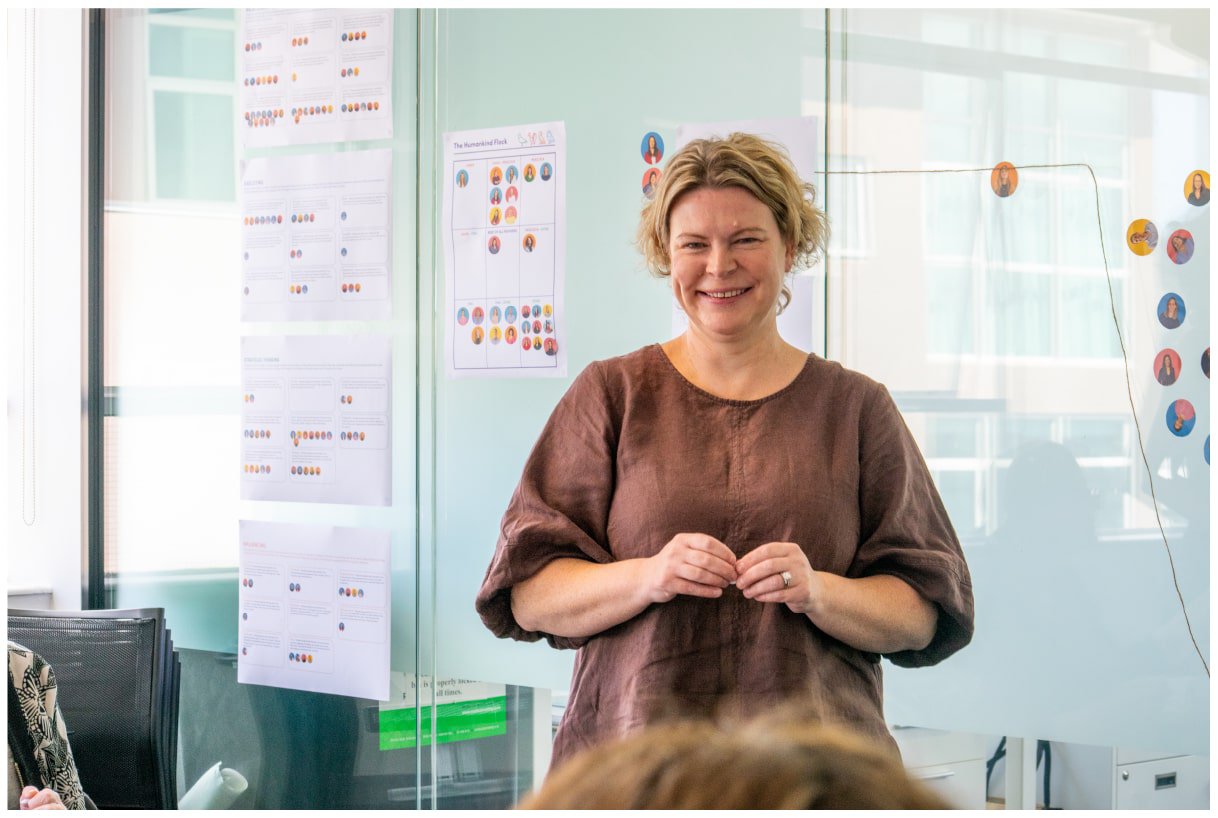We’re often inclined to use the new year as a way to hit re-set and define personal goals for ourselves. Should we do that in our organisations as well?
We definitely should take the opportunity to set the scene for our people and build momentum for the year ahead. And it’s the perfect time to ensure that everyone is clear on expectations because we need teams to be moving together in the same direction, working well with each other and performing at their best.
At Humankind, we know that having alignment within the team and being explicit on what’s expected (and what to expect in return) is critical for ensuring people are making the right contribution and as importantly, they feel that their contribution matters. We have our own set of guiding values, ways of working, clear strategy and purpose, rhythms and rituals that have been intentionally designed with our team to ensure we know what’s expected, why we do what we do and how we are going to get there. Designing with your people instinctively means they will feel a greater depth of connection and build an experience that works for them and your organisation.
In our experience with clients, we know that when people aren’t clear on what is expected of them, things can unravel and show up in multiple ways such as poor performance, lack of engagement, relationship issues, and so on. Why not use the start of the year to ensure your team are able to start as you mean them to go on, having clear expectations and the freedom to act within a frame.
Here is an example of how we approached this with one of our clients:
The challenge at hand
The client (public sector with a diverse employee base) had received feedback from employee surveys and focus groups that there was too much red tape and reliance on policies for decision making, the policies and processes were complex, out of date and did not reflect the organisational values. This resulted in a poor experience for employees and leaders, and people not feeling empowered to do the right thing or be clear on what was expected of them – a sure fire way to slow down progress.
Strategies in action
We took this as an opportunity to take things back to basics and rather than attempt to simplify a few policies and fix some processes, we worked with the project team and a selection of employees to identify the broader outcomes they were trying to achieve and the type of organisation they wanted to be. Using our employee centred design methodology, we determined that the main output needed to be an organisational charter which would describe how they wanted all people to work together and would be a home for their values and simplified policies.
We worked closely with their people to create a meaningful document which brought the values to life and gave all employees the freedom to act (something the CEO was very passionate about), knowing they had clear expectations to guide them in their actions and decisions. We also developed a policy template which was visual and simple and challenged policy developers to think about the intent and necessity of a policy ensuring that the outputs reflected the outcomes the organisation was looking to achieve.
Throughout the process we continued to seek feedback from employees and iterate based on that feedback. When it came to implementing the Charter, those employees were ambassadors and were able to share the journey they had been on through a series of workshops where we broke the charter down for leaders and employees to ensure they understood not only the content, but the overarching intent as well.
Challenges into triumph
- The outputs were a simple and beautiful charter and policy templates designed with employees to provide clear expectations for how to work and the freedom to act in line with organisational values.
- Feedback was very positive about the design process, the amount of involvement from employees and how we continuously connected back to the purpose of why this piece of work was so important.
- The client is continuing to ensure that the charter and values are front of mind for people, celebrating when the values are demonstrated and supporting leaders to focus on both what people are doing and how they are behaving – this is what drives performance.
- A quote from a participant in the project sums it up nicely – “Do I have a story for you! When I joined 2 years ago, the previous legal counsel told me that I would need to get involved in this policy rationalisation project. I thought, that’s easy, I will make a few edits and change the font and everything will be fine. So I got invited along to this workshop and I thought, that seems strange having a workshop to simplify a few policies, but I went along. Well, was I in for a surprise! We barely even talked about policies. We explored who we were as an organisation, how we wanted to be. We identified we wanted to be values based and empower people to do their work, and the concept of the Charter came from that”.
Why don’t you take the opportunity at the start of the year to ensure your team is clear on what’s expected of them and have the guidance as to what it means to be an employee in your organisation. Start as you mean to go on and set everyone up for success.
